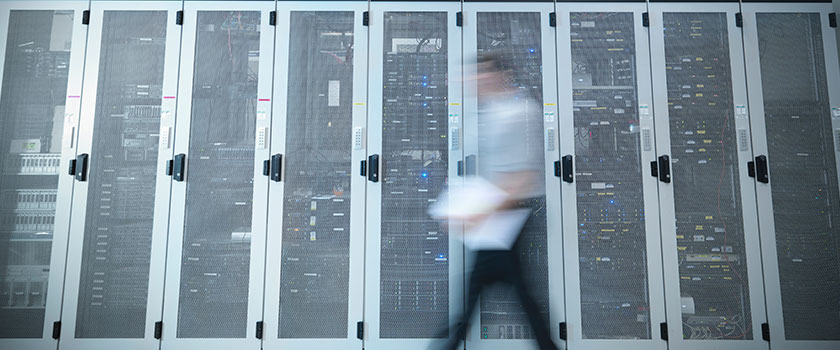Despite still being in its infancy, generative AI has already proved to be a boon for big tech names, but can it be used more widely, and if so, how and by whom?
Key messages
- In 2023, semiconductor and big tech names were the main beneficiaries of generative artificial intelligence (gen AI). In 2024, the adoption of gen AI should boost the performance of cloud software names.
- The end of the global hiking cycle is likely to have a disproportionately positive impact on long-duration assets such as high-growth software names.
- We favour a barbell approach with a combination of well established, high-margin, large-cap software names, together with high-growth, smaller and more economically sensitive cloud-software stocks.
The adoption of gen AI remains at a very early stage but the success of applications such as ChatGPT demonstrates the high demand for algorithms capable of creating content such as texts, images and even software code.
The first wave of positive impact from gen AI drove demand for high-end chips used to train large language models (LLMs). This has mostly benefited semiconductor names with a dominant position in graphics processing units (GPUs) like Nvidia.
Yet even large companies cannot justify investing hundreds of millions in chips to train their own AI models. Instead, they can rent computing power from the likes of Amazon, Microsoft and Google. With this adoption of gen AI fuelling the cloud infrastructure market, revenue growth at Microsoft Azure reached 28% year-on-year in Q4 2023 (AI accounted for 6 ppts).
Tomorrow’s beneficiaries of gen AI will be cloud software names seeking to increase user-friendliness and automation in their applications – added features for which they can charge their customers.
Gen AI applications like GitHub Copilot will also help increase software developers’ productivity by up to 55% by automatically writing and debugging lines of code. Spending on infrastructure software, used to support and manage the IT environment, has been under pressure as companies tried to optimise their IT spending following a period of rapid IT budget expansion during Covid. Infrastructure software tends to be priced based on usage rather than subscription which makes it more sensitive to macroeconomic conditions; it should therefore benefit the most if and when IT budgets recover. The adoption of gen AI will also require companies to modernise their infrastructure software to manage and feed large language models with more data. This will benefit providers of analytical databases (e.g. Snowflake), application monitoring software (e.g. Dynatrace) and software development tools (e.g. GitLab).
Application software is used to automate specific tasks. By leveraging gen AI, it will be easier for companies to fully automate functions and even reduce headcount. Large application software providers such as Microsoft, Salesforce and Adobe have already started incorporating gen AI into their software solutions (e.g. Microsoft Copilot, Adobe Firefly and Salesforce’s Einstein GPT). On the back of the additional functionalities provided by gen AI, Microsoft is charging USD 30/month/user for 365 Copilot, while Adobe has raised the tariffs for its Creative Cloud by around 8%. Applications used in functions with a high level of human interaction such as customer relationship management should benefit the most from automation driven by gen AI.
The software as a service (SaaS) sector currently trades at just above 8x forward sales, in line with its 10-year historical average despite the strong year-end rally at the end of 2023 due to upgrades to revenue growth forecasts.
The adoption of gen AI will take time, especially in highly regulated sectors like healthcare and banking. However, its use cases are likely to be much broader than we can anticipate today (e.g. designing new drugs or semiconductors). In 2024, the software sector should start to see a positive impact on revenue from gen AI while also benefiting from a lower interest rate environment.
The opinions expressed in this document are as at 28 February 2024 and are subject to change.








